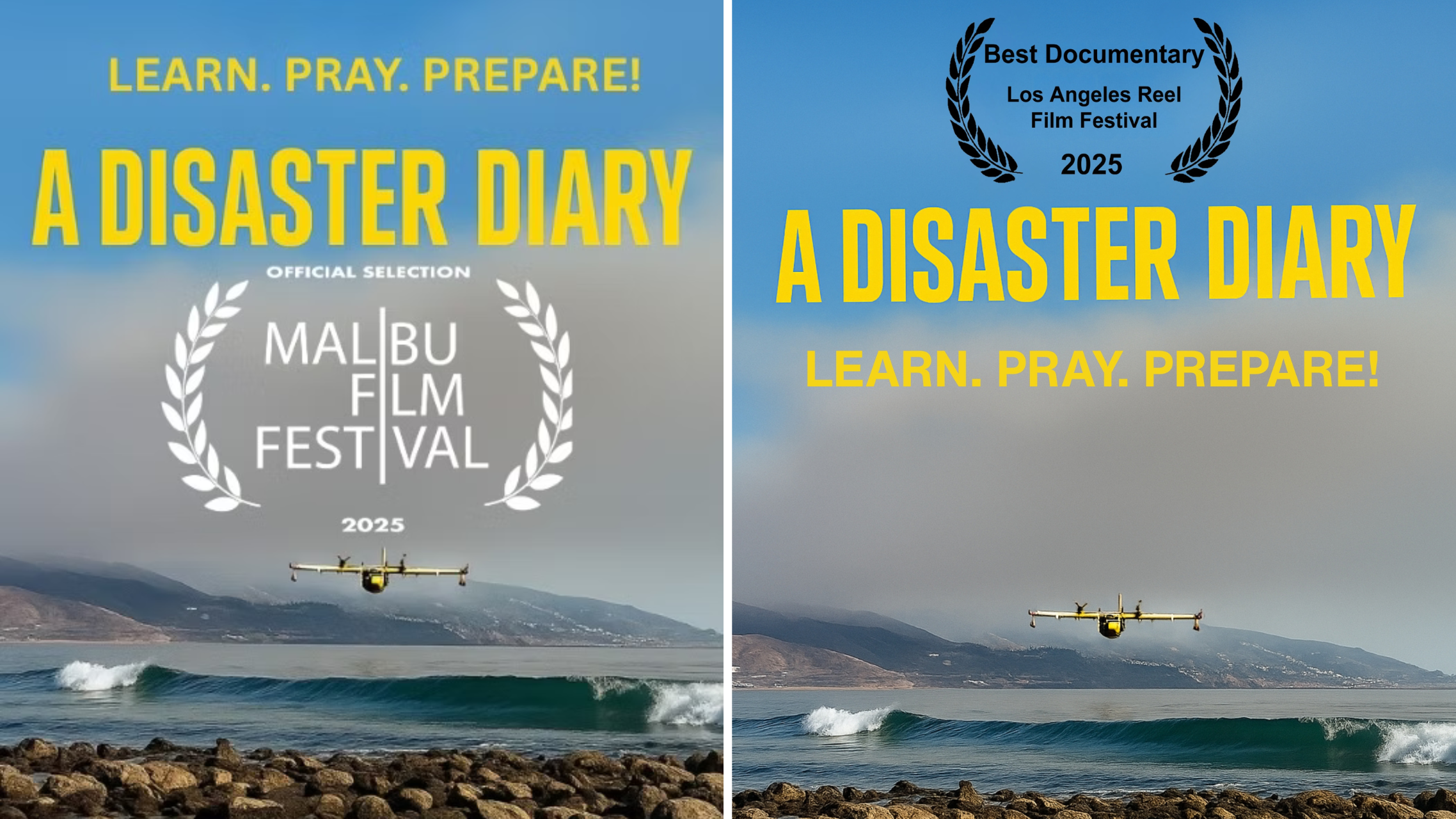With ‘A Disaster Diary,’ Malibu Agent-Filmmaker Pamela Conley Ulich Looks for Lessons Learned from the L.A. Wildfires
by David Hay
October 2025
In the aftermath of January's devastating wildfires in Los Angeles, Malibu-based Elliman agent Pamela Conley Ulich was determined to raise awareness about two key things: the heroism and fortitude of Angelinos when faced with catastrophe—and the urgent need to prepare before the next catastrophe strikes.
The result of that determination is A Disaster Diary: Learn. Pray. Prepare., a documentary by Ulich and co-creator Haylynn Conrad that premiered October 12 at both the Malibu Film Festival and the Los Angeles Reel Film Festival. The film won both the Malibu Filmmaker Award and LARFF's top documentary award.
The awards and accolades notwithstanding, as Ulich tells me right away, A Disaster Diary is anything but glamorous.
“We just used what we had,” she says of the raw iPhone videos and Instagram posts that she and neighbors took. They give A Disaster Diary a captivating veracity that puts the viewer right there amidst the fire and its long, fraught aftermath. It transports us back to those tense hours and then long days when this community was rallying around and supporting their neighbors who fought to save their homes and lives.
Much of the film follows Conrad, who is also a Malibu City Councilwoman, as she goes on her rounds, from making stops at the emergency supply distribution centers that had popped up along the Pacific Coast Highway (PCH) to dropping in on an urgent care center, where health workers urge firefighters and emergency workers to have their lungs checked. We see the news conferences where local officials inform residents of the recovery progress. And as we see from the frustration and pain evident in the residents’ faces, those recovery efforts are rarely enough.
Very smartly, the film focuses on one critical step that had yet to be taken when they were first filming: the re-opening of the PCH, Malibu’s lifeline to the world. This would have allowed residents to return to their homes even if only for a short time so they could pick up items such as emergency medicine and supplies. Its continued closure shows how desperate and anxious these residents had become.
The PCH emerges as one of the documentary’s main characters. Anyone who has lived in Los Angeles—and, of course, in Malibu and Santa Monica to the south—has travelled up this highway hundreds if not thousands of times. It is a symbol of the Southern California dream, once teaming with surfers and the denizens of beach culture. (One of my own memories of the PCH involves stopping at a McDonalds just east of the highway while biking with friends and sitting at the table adjacent to Malibu resident Pamela Anderson, in all her 1990s glory.)
How the Palisades fire changed all that is powerfully illustrated in the documentary, especially during its last section, when Ulich and Conrad slowly drive along the just re-opened highway in late January. It’s a journey through a hellish landscape of burned-out pick-ups, houses twisted and charred beyond recognition, and the general devastation of a war zone. As they drive, the filmmakers try to process what they’re seeing, who’s been lost, and how the community has come together to respond. There are anecdotes about residents who stayed behind during the fire, donning scuba gear and taking refuge in their pools, showering their homes with much of that water, and ultimately saving them from the mighty fire.
“We might all have to learn to do that in the future!” Ulich says.
How can we do things differently the next time? is a question that permeates the film. One response is to make better use of the largest water source in the world—the Pacific Ocean—in fighting fires. (After all, notes Ulich: “It’s right out our window.”) While air tankers were able to troll the ocean during earlier fires and scoop up gallons of water, the wind in the Palisades fire made such tactics unsafe. And then there is the problem that salt water is not as effective at fire suppression as fresh water.
In moments like these, A Disaster Diary rises above mere documentary to become a challenge about our future, asking viewers and residents of Malibu alike, How will you help us move forward? How can you help us imagine a different future for this once idyllic strip of pleasure and joy alongside the Pacific Ocean?
For Ulich, these questions are the vital remnants left by the fire. And her short, unpolished film is a testament to moving beyond simple survival to create a new and more resilient way of living. Yes, Malibu has been changed by this disaster. So, how, then, are we going to change with it? A Disaster Diary is such a propitious start.
"We want people to know how resilient Los Angeles is," Ulich says. "Angels rise—stronger together."






